Fifth-Generation District Heating and Cooling Substations: Demand Response with Artificial Neural Network-Based Model Predictive Control
Abstract
1. Introduction
1.1. Decarbonising the Building Sector with 5GDHC Systems
- to increase the efficiencies of the WSHP unit with a more stable operation and yield the possibility to operate when the heat demand is below the WSHP minimum capacity, hence limiting the number of on-off switching events that are a cause of stress of both the electrical and mechanical WSHP components, reducing their lifetime,
- to meet the user’s comfort requirements during thermal peak loads, mainly with respect to domestic hot water (DHW) delivery, and
- to increase the self-consumption of electricity from local decentralised non-dispatchable renewable energy sources, like rooftop photovoltaic systems. This is a value both for the user energy bill, as well as for the power distribution grid, benefiting from a form of flexibility that helps reduce the occurrence of power grid faults due to frequency or voltage variations. In fact, an aggregated WSHP pool can increase the electricity consumption when it is needed (negative balancing) and store it in the form of thermal energy or can partially reduce it (positive balancing).
1.2. Recent Publications about 5GDHC Systems and Urban Excess Heat Recovery
2. Materials and Methods
2.1. Physical Modelling and Laboratory Test of the 5GDHC Energy Transfer Station (ETS)
2.2. Physical Model Calibration, WSHP Limits, and Parametric Simulations on the Thermal Energy Storage System
- The outlet temperature at the evaporator () must be higher than 4.9 °C to avoid a freezing alarm. This critical condition can be reached during the WSHP operation around points A and B of Figure 6a.
- The outlet temperature at the condenser () must be lower than 57.3 °C to avoid an alarms for refrigerant high temperature (max 118 °C) and high pressure (max 40 bar at the compressor outlet). This critical condition can be reached during the WSHP operation around points B and C of Figure 6a.
- four values for the relative height of the sensor used to control the thermal energy storage temperature, as shown in Figure 7, and identified with a letter (A = 20%, B = 40%, C = 60%, and D = 80%);
- two values for the DHW TES volume identified by a number that follows the letter, equal to 0.5 m3 (1) and 1 m3 (2), respectively; and
- three values for the dead-band of the hysteresis implemented in the rule-based control that was fixed equal to 5 °C (1), 10 °C (2), and 15 °C (3).
- that aims at evaluating the fraction of time when the DHW tap water has a temperature below 44 °C with respect to the total draw-off period, according to Equation (6). It allows verifying whether the boundary conditions concerning the thermal energy storage capacity and control settings satisfy the user’s comfort.
- and , which are the average thermal energy supplied by the WSHP to the DHW TES and average electricity consumption per single charge, calculated as the yearly energy quantity divided by the yearly number of on-off cycles, according to Equations (7) and (8), respectively.
2.3. ANN Model and Training Algorithm
- is the thermal energy delivered by the on-off WSHP to the DHW TES in one control time step (4 kWhth) and represents the control input provided according to the results of the MPC algorithms during the on-line simulation (see Section 2.5).
- is the forecasted DHW load to cover under the hypothesis of the perfect prediction.
- and are the temperatures at the top and at the bottom of the TES, respectively.
- is the inlet temperature at the WSHP condenser here equal to .
- is the inlet temperature at the WSHP evaporator.
- is the electricity consumption of the substation during the DHW operation as a sum of the consumption of the heat pump compressor () and the hydraulic pumps ().
- is the thermal energy extracted by the WSHP from the DHC network.
2.4. ANN Model Training and Validation Results
2.5. MPC Implementation with an RBC Back-Up Controller and TRNSYS-LabVIEW Dynamic Link Library (DLL)
2.6. MPC vs. RBC Scenario Boundary Conditions
- The price of the thermal energy extracted from the 5GDHC grid is considered constant and equal to 0.05 (EUR/kWh) for the different scenarios.
- The electricity tariff during off-peak hours is considered constant and equal to 0.15 (EUR/kWh) for the different scenarios.
- The electricity tariff during on-peak hours varies, and it is equal to 0.30 (EUR/kWh) for MPC scenario 1 and 0.60 (EUR/kWh) for MPC scenario 2.
3. Results and Discussion
3.1. Parametric Analysis on the DHW TES System
3.2. Results of the Rule-Based Control (RBC) vs. Model Predictive Control (MPC) Scenario Analysis
4. Conclusions
Author Contributions
Funding
Conflicts of Interest
Nomenclature and Abbreviations
| 5GDHC | Fifth-generation district heating and cooling |
| ANN | Artificial neural network |
| COP | Coefficient of performance (-) |
| DHW | Domestic hot water |
| ETS | Energy transfer station |
| MPC | Model predictive control |
| RBC | Rule-based controller |
| TES | Thermal energy storage |
| WSHP | Water source heat pump |
References
- European Commission. An EU Strategy on Heating and Cooling; European Commission: Brussels, Belgium, 2016. [Google Scholar]
- Ruiz, I.B.; Wecker, K. Where is Europe’s Air Safe to Breathe? Available online: https://www.dw.com/en/where-is-europes-air-safe-to-breathe/a-46189571 (accessed on 14 February 2020).
- Kranzl, L.; Hartner, M.; Müller, A.; Resch, G.; Fritz, S.; Fleiter, T.; Herbst, A.; Rehfeldt, M.; Manz, P.; Zubaryeva, A.; et al. Heating & Cooling Outlook Until 2050, EU-28; Hotmaps Project; European Commission: Brussels, Belgium, 2018. [Google Scholar]
- Persson, U.; Werner, S. Quantifying the Heating and Cooling Demand in Europe; European Commission: Brussels, Belgium, 2015. [Google Scholar]
- Wheatcroft, E.; Wynn, H.; Lygnerud, K.; Bonvicini, G.; Leonte, D. The Role of Low Temperature Waste Heat Recovery in Achieving 2050 Goals: A Policy Positioning Paper. Energies 2020, 13, 2107. [Google Scholar] [CrossRef]
- DHC+ Technology Platform. District Heating & Cooling: A Vision Towards 2020-2030-2050; Euroheat & Power: Brussels, Belgium, 2012. [Google Scholar]
- Prando, D.; Prada, A.; Ochs, F.; Gasparella, A.; Baratieri, M. Analysis of the energy and economic impact of cost-optimal buildings refurbishment on district heating systems. Sci. Technol. Built Environ. 2015, 21, 876–891. [Google Scholar] [CrossRef]
- European Commission. The European Green Deal Investment Plan and Just Transition Mechanism Explained. Available online: https://ec.europa.eu/commission/presscorner/detail/en/qanda_20_24 (accessed on 14 February 2020).
- Lund, H.; Østergaard, P.A.; Chang, M.; Werner, S.; Svendsen, S.; Sorknæs, P.; Thorsen, J.E.; Hvelplund, F.; Mortensen, B.O.G.; Mathiesen, B.V.; et al. The status of 4th generation district heating: Research and results. Energy 2018, 164, 147–159. [Google Scholar] [CrossRef]
- Fallahi, Z.; Henze, G.P. Interactive Buildings: A Review. Sustainability 2019, 11, 3988. [Google Scholar]
- EU H2020 FLEXYNETS Project. Available online: www.flexynets.eu (accessed on 10 January 2020).
- EU Interreg D2Grids Project. Available online: http://www.nweurope.eu/projects/project-search/d2grids-increasing-the-share-of-renewable-energy-by-accelerating-the-roll-out-of-demand-driven-smart-grids-delivering-low-temperature-heating-and-cooling-to-nwe-cities/ (accessed on 10 July 2020).
- EU Life4HeatRecovery Project. Available online: http://www.life4heatrecovery.eu (accessed on 15 June 2020).
- EU H2020 REWARDHeat Project. Available online: https://www.rewardheat.eu (accessed on 15 June 2020).
- EU H2020 ReUseHeat Project. Available online: https://www.reuseheat.eu (accessed on 15 June 2020).
- EU H2020 TEMPO Project. Available online: https://www.tempo-dhc.eu (accessed on 15 June 2020).
- EU H2020 WEDISTRICT Project. Available online: https://www.wedistrict.eu (accessed on 15 June 2020).
- EU H2020 RELaTED Project. Available online: http://www.relatedproject.eu (accessed on 15 June 2020).
- H2020 Upgrade DH Project. Available online: http://www.upgrade-dh.eu (accessed on 15 June 2020).
- EU H2020 COOL DH Project. Available online: http://www.cooldh.eu (accessed on 15 June 2020).
- EU H2020 KeepWarm Project. Available online: https://keepwarmeurope.eu (accessed on 15 June 2020).
- EU H2020 THERMOS Project. Available online: https://www.thermos-project.eu (accessed on 15 June 2020).
- EU Interreg HeatNet NWE Project. Available online: http://www.nweurope.eu/projects/project-search/heatnet-transition-strategies-for-delivering-low-carbon-district-heat/ (accessed on 15 June 2020).
- EU Interreg ENTRAIN Project. Available online: https://www.interreg-central.eu/Content.Node/ENTRAIN.html (accessed on 15 June 2020).
- Ruesch, F.; Haller, M. Potential and limitations of using low-temperature district heating and cooling networks for direct cooling of buildings. In Proceedings of the International Conference CISBAT 2017 Future Buildings & Districts—Energy Efficiency from Nano to Urban Scale, Lausanne, Switzerland, 6–8 September 2017; Volume 122, pp. 1099–1104. [Google Scholar]
- Vetterli, N.; Sulzer, N.; Menti, U.P. Energy monitoring of a low temperature heating and cooling district network. Energy Procedia 2017, 122, 62–67. [Google Scholar]
- Bünning, F.; Wetter, M.; Fuchs, M.; Müller, D. Bidirectional low temperature district energy systems with agent-based control: Performance comparison and operation optimization. Appl. Energy 2018, 209, 502–515. [Google Scholar] [CrossRef]
- Ruesch, F.; Rommel, M.; Scherer, J. Pumping power prediction in low temperature district heating networks. In Proceedings of the International Conference CISBAT 2015 Future Buildings and Districts Sustainability from Nano to Urban Scale, Lausanne, Switzerland, 9–11 September 2015; LESO-PB, EPFL. pp. 753–758. [Google Scholar]
- Vetterli, N.; Sulzer, M. Dynamic analysis of the low-temperature district network “Suurstoffi” through monitoring. In Proceedings of the International Conference CISBAT 2015 Future Buildings and Districts Sustainability from Nano to Urban Scale, Lausanne, Switzerland, 9–11 September 2015; LESO-PB, EPFL. pp. 517–522. [Google Scholar]
- Prasanna, A.; Dorer, V.; Vetterli, N. Optimisation of a district energy system with a low temperature network. Energy 2017, 137, 632–648. [Google Scholar] [CrossRef]
- Ruesch, F.; Scherer, J.; Kolb, M. Erdreich als Speicher—Grosse Anergienetze. In Proceedings of the Internationale Konferenz zur Simulation gebäudetechnischer Energiesysteme, Winterthur, Switzerland, 8–9 September 2016. [Google Scholar]
- Gautschi, T. Energiekonzept Anergienetz Hönggerberg; ETH Zürich, Infrastrukturbereich Immobilien: Zürich, Switzerland, 2015. [Google Scholar]
- La Boucle d’eau Tempérée à Énergie Géothermique; AFPG—Association Française des Professionnels de la Géothermie: Paris, France, 2019.
- Revesz, A.; Jones, P.; Dunham, C.; Davies, G.; Marques, C.; Matabuena, R.; Scott, J.; Maidment, G. Developing novel 5th generation district energy networks. Energy 2020, 201, 117389. [Google Scholar] [CrossRef]
- Long, N.L. Reduced Order Models for Rapid Analysis of Ambient Loops for Commercial Buildings. Ph.D. Thesis, University of Colorado, Boulder, CO, USA, 2018. [Google Scholar]
- Buffa, S.; Cozzini, M.; D’Antoni, M.; Baratieri, M.; Fedrizzi, R. 5th generation district heating and cooling systems: A review of existing cases in Europe. Renew. Sustain. Energy Rev. 2019, 104, 504–522. [Google Scholar]
- Boesten, S.; Ivens, W.; Dekker, S.C.; Eijdems, H. 5th generation district heating and cooling systems as a solution for renewable urban thermal energy supply. Adv. Geosci. 2019, 49, 129–136. [Google Scholar]
- Von Rhein, J.; Henze, G.P.; Long, N.; Fu, Y. Development of a topology analysis tool for fifth-generation district heating and cooling networks. Energy Convers. Manag. 2019, 196, 705–716. [Google Scholar] [CrossRef]
- National Renewable Energy Laboratory (NREL) URBANopt Advanced Analytics Platform. Available online: https://www.nrel.gov/buildings/urbanopt.html (accessed on 1 March 2020).
- Modelica Buildings Library. Available online: https://simulationresearch.lbl.gov/modelica/ (accessed on 3 March 2020).
- Sommer, T.; Sulzer, M.; Wetter, M.; Sotnikov, A.; Mennel, S.; Stettler, C. The reservoir network: A new network topology for district heating and cooling. Energy 2020, 199, 117418. [Google Scholar] [CrossRef]
- Abugabbara, M.; Javed, S.; Bagge, H.; Johansson, D. Bibliographic analysis of the recent advancements in modeling and co-simulating the fifth-generation district heating and cooling systems. Energy Build. 2020, 110260. [Google Scholar] [CrossRef]
- Wirtz, M.; Kivilip, L.; Remmen, P.; Müller, D. 5th Generation District Heating: A novel design approach based on mathematical optimization. Appl. Energy 2020, 260, 114158. [Google Scholar] [CrossRef]
- Wirtz, M.; Kivilip, L.; Remmen, P.; Müller, D. Quantifying Demand Balancing in Bidirectional Low Temperature Networks. Energy Build. 2020, 224, 110245. [Google Scholar] [CrossRef]
- Miara, M.; Günther, D.; Leitner, Z.L.; Wapler, J. Simulation of an Air-to-Water Heat Pump System to Evaluate the Impact of Demand-Side-Management Measures on Efficiency and Load-Shifting Potential. Energy Technol. 2014, 2, 90–99. [Google Scholar] [CrossRef]
- Henze, G.P.; Felsmann, C.; Knabe, G. Evaluation of optimal control for active and passive building thermal storage. Int. J. Therm. Sci. 2004, 43, 173–183. [Google Scholar] [CrossRef]
- Pau, M.; Cunsolo, F.; Vivian, J.; Ponci, F.; Monti, A. Optimal Scheduling of Electric Heat Pumps combined with Thermal Storage for Power Peak Shaving. In Proceedings of the 2018 IEEE International Conference on Environment and Electrical Engineering and 2018 IEEE Industrial and Commercial Power Systems Europe (EEEIC/I&CPS Europe), Palermo, Italy, 12–15 June 2018. [Google Scholar]
- Rastegarpour, S.; Gros, S.; Ferrarini, L. MPC approaches for modulating air-to-water heat pumps in radiant-floor buildings. Control Eng. Pract. 2020, 95, 104209. [Google Scholar] [CrossRef]
- Beghi, A.; Cecchinato, L.; Cosi, G.; Rampazzo, M. A PSO-based algorithm for optimal multiple chiller systems operation. Appl. Therm. Eng. 2012, 32, 31–40. [Google Scholar] [CrossRef]
- D’Ettorre, F.; Conti, P.; Schito, E.; Testi, D. Model predictive control of a hybrid heat pump system and impact of the prediction horizon on cost-saving potential and optimal storage capacity. Appl. Therm. Eng. 2019, 148, 524–535. [Google Scholar] [CrossRef]
- Eurac Research Energy Exchange Lab. Available online: http://www.eurac.edu/en/research/technologies/renewableenergy/Infrastructure/Pages/Energy-Exchange-Lab.aspx (accessed on 15 December 2017).
- ASHRAE 14-2002. In Guideline 14-2002: Measurement of Energy and Demand Savings; American Society of Heating, Refrigeration and Air-Conditioning Engineers: Atlanta, GA, USA, 2002.
- Harmer, L.C.; Henze, G.P. Using calibrated energy models for building commissioning and load prediction. Energy Build. 2015, 92, 204–215. [Google Scholar] [CrossRef]
- Ruiz, G.; Bandera, C. Validation of Calibrated Energy Models: Common Errors. Energies 2017, 10, 1587. [Google Scholar] [CrossRef]
- Menegon, D.; Fedrizzi, R. FP7 INSPIRE Project D4.7: Report on Laboratory Dynamic Tests. 2016. Available online: https://cordis.europa.eu/project/id/314461/reporting (accessed on 21 August 2020).
- Afram, A.; Janabi-Sharifi, F.; Fung, A.S.; Raahemifar, K. Artificial neural network (ANN) based model predictive control (MPC) and optimization of HVAC systems: A state of the art review and case study of a residential HVAC system. Energy Build. 2017, 141, 96–113. [Google Scholar] [CrossRef]
- Curtis, R.; Pine, T. Effects of Cycling on Domestic GSHPs. Supporting Analysis to EA Technology Simulation/Modelling; Mimer Geoenergy: Cornwall, UK, 2012. [Google Scholar]
- Afram, A.; Janabi-Sharifi, F. Theory and applications of HVAC control systems—A review of model predictive control (MPC). Build. Environ. 2014, 72, 343–355. [Google Scholar] [CrossRef]
- Kajgaard, M.U.; Mogensen, J.; Wittendorff, A.; Veress, A.T.; Biegel, B. Model predictive control of domestic heat pump. In Proceedings of the American Control Conference (ACC), Washington, DC, USA, 17–19 June 2013. [Google Scholar]
- Ma, Y.; Borrelli, F.; Hencey, B.; Packard, A.; Bortoff, S. Model predictive control of thermal energy storage in building cooling systems. In Proceedings of the 48h IEEE Conference on Decision and Control (CDC) Held Jointly with 2009 28th Chinese Control Conference, Shanghai, China, 15–18 December 2009; pp. 392–397. [Google Scholar]
- Vivian, J.; Jobard, X.; Hassine, I.B.; Pietrushka, D.; Hurink, J.L. Smart Control of a District Heating Network with High Share of Low Temperature Waste Heat. In Proceedings of the 12th Conference on Sustainable Development of Energy, Water and Environmental Systems-SDEWES, Dubrovnik, Croatia, 4–8 October 2017. [Google Scholar]
- Knudsen, M.D.; Petersen, S. Model predictive control for demand response of domestic hot water preparation in ultra-low temperature district heating systems. Energy Build. 2017, 146, 55–64. [Google Scholar] [CrossRef]
- Kennedy, J.; Eberhart, R.C. A Discrete Binary Version of the Particle Swarm Algorithm; IEEE: Orlando, FL, USA, 1997. [Google Scholar]
- Amarasinghe, K.; Wijayasekara, D.; Carey, H.; Manic, M.; He, D.; Chen, W. Artificial neural networks based thermal energy storage control for buildings. In Proceedings of the IECON 2015—41st Annual Conference of the IEEE Industrial Electronics Society, Yokohama, Japan, 9–12 November 2015; pp. 005421–005426. [Google Scholar]
- Zhao, X. A perturbed particle swarm algorithm for numerical optimization. Appl. Soft Comput. 2010, 10, 119–124. [Google Scholar]
- Advanced Metaheuristics Algorithms by ENIT. Available online: http://sine.ni.com/nips/cds/view/p/lang/it/nid/216789 (accessed on 25 October 2018).
- Derouiche, M.L.; Bouallègue, S.; Haggège, J.; Sandou, G. LabVIEW Perturbed Particle Swarm Optimization Based Approach for Model Predictive Control Tuning. IFAC Pap. 2016, 49, 353–358. [Google Scholar] [CrossRef]
- Buffa, S.; Cozzini, M.; Henze, G.P.; Dipasquale, C.; Baratieri, M.; Fedrizzi, R. Potential study on demand side management in district heating and cooling networks with decentralised heat pumps. In Proceedings of the International Sustainable Energy Conference—ISEC 2018, Graz, Austria, 3–5 October 2018; pp. 91–99. [Google Scholar]
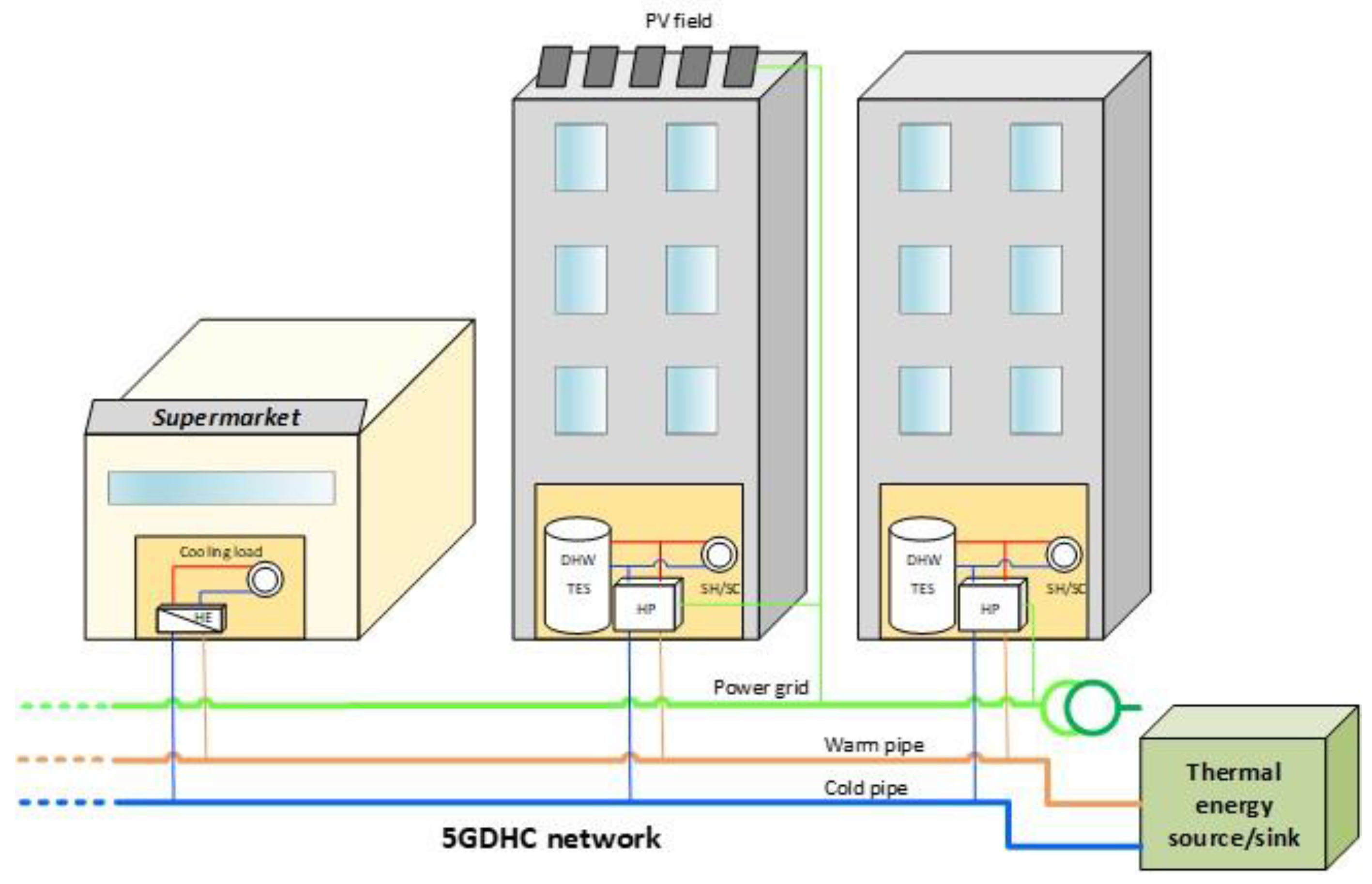
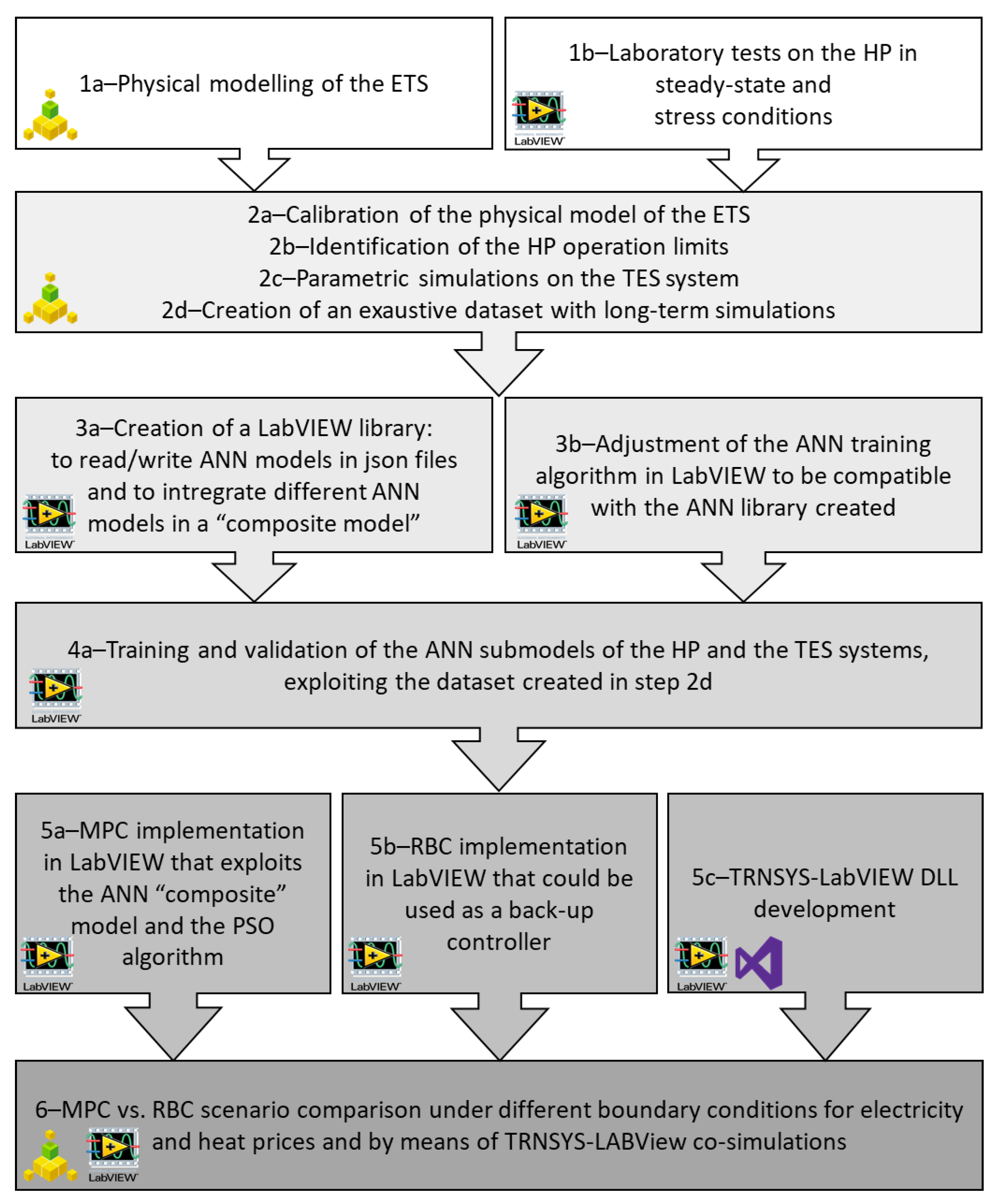
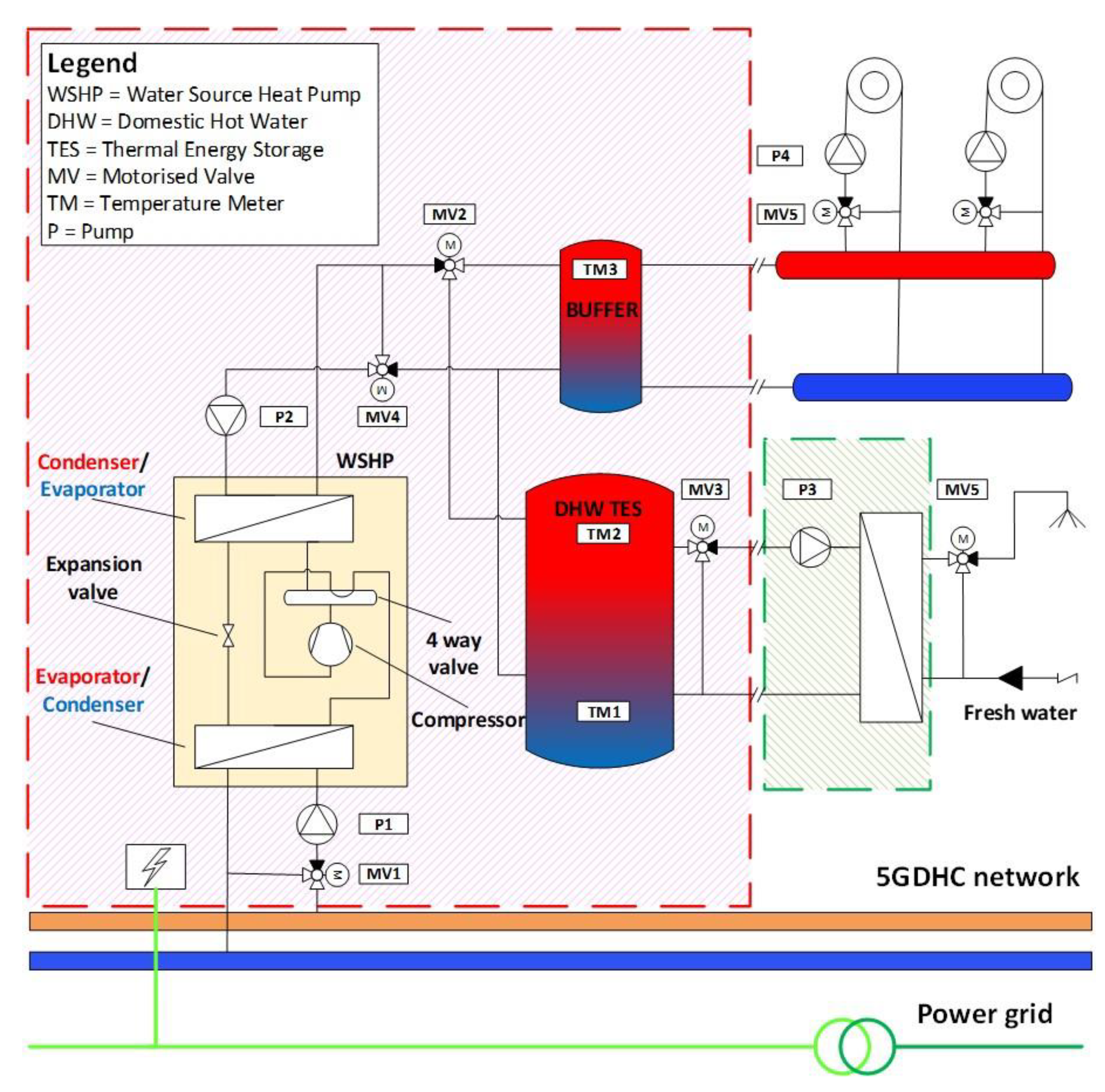

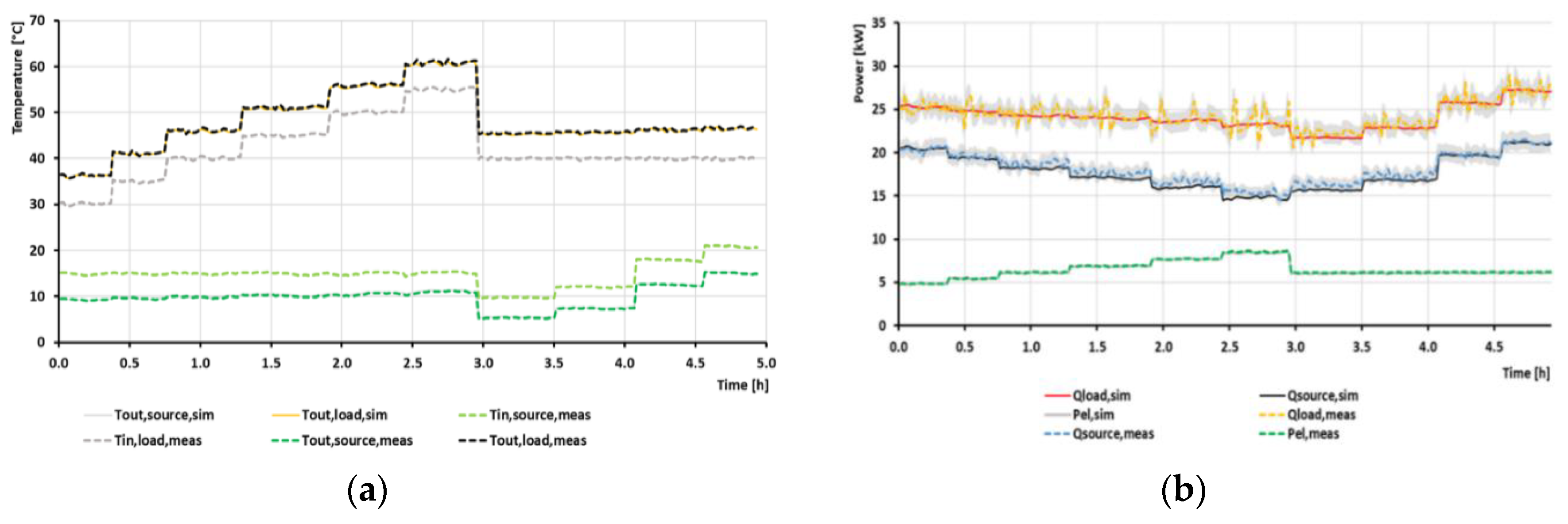
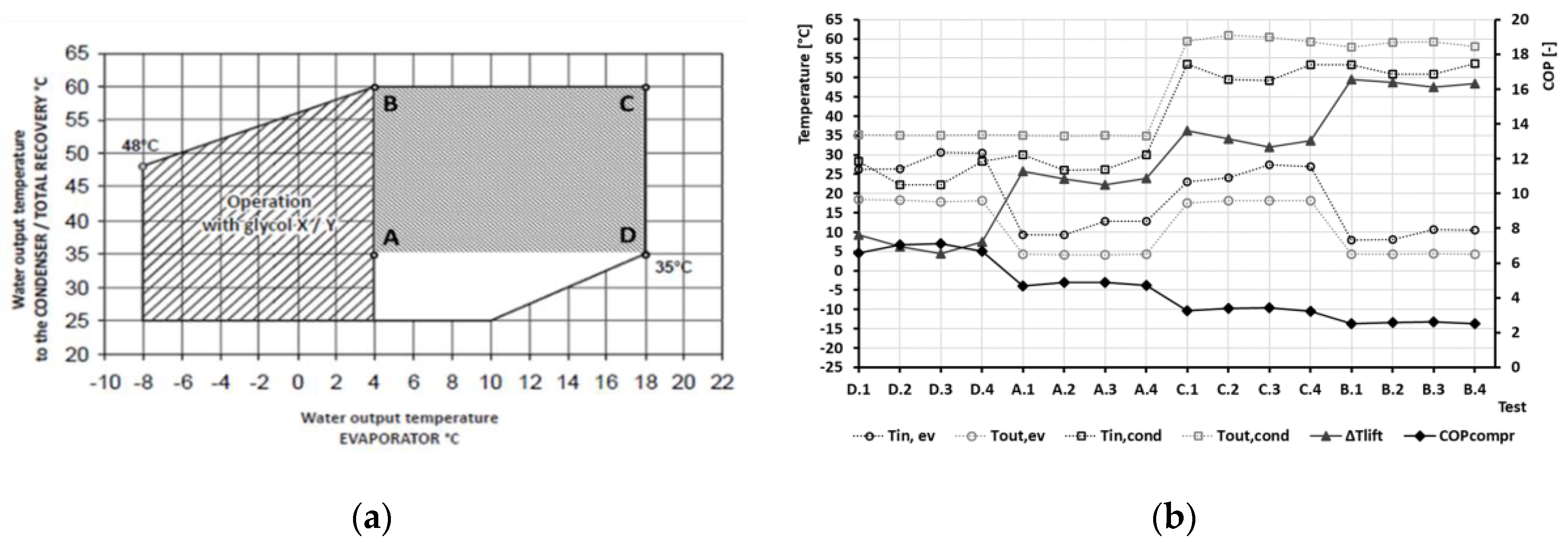
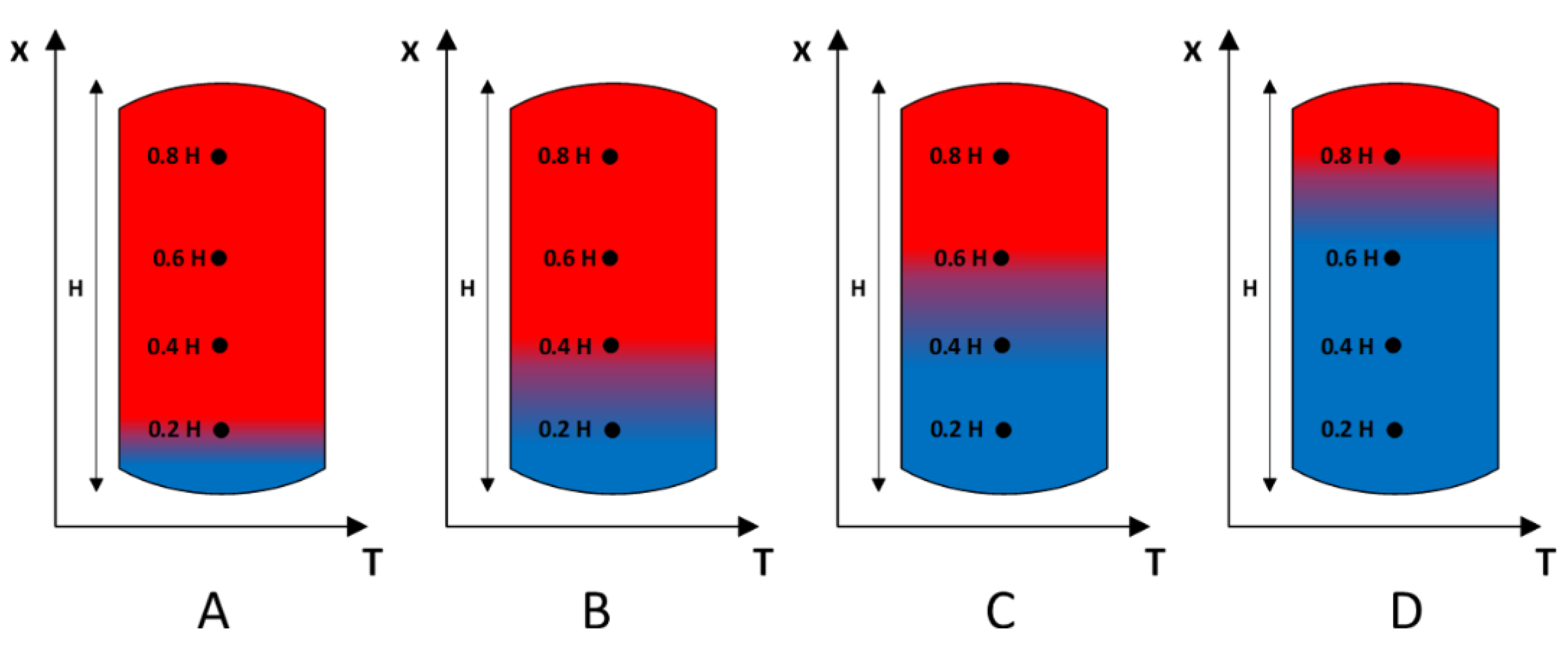
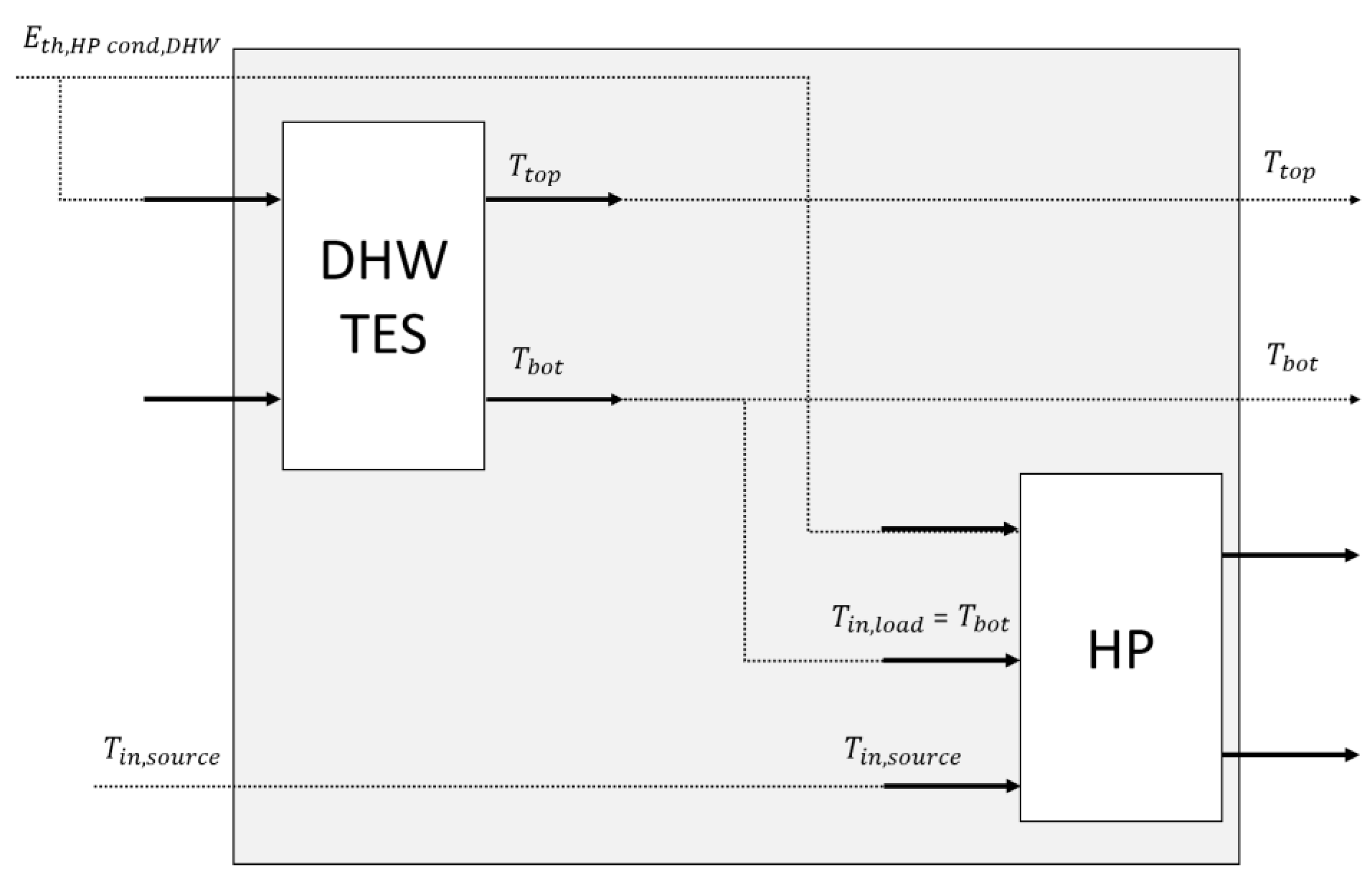
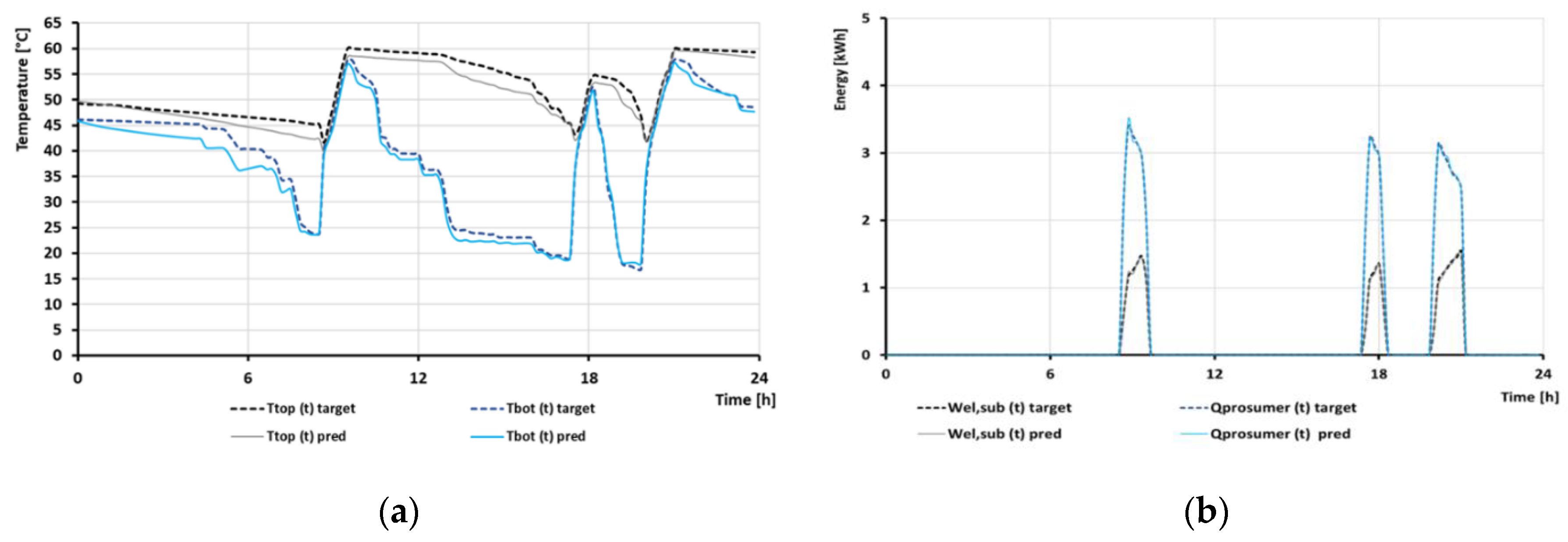
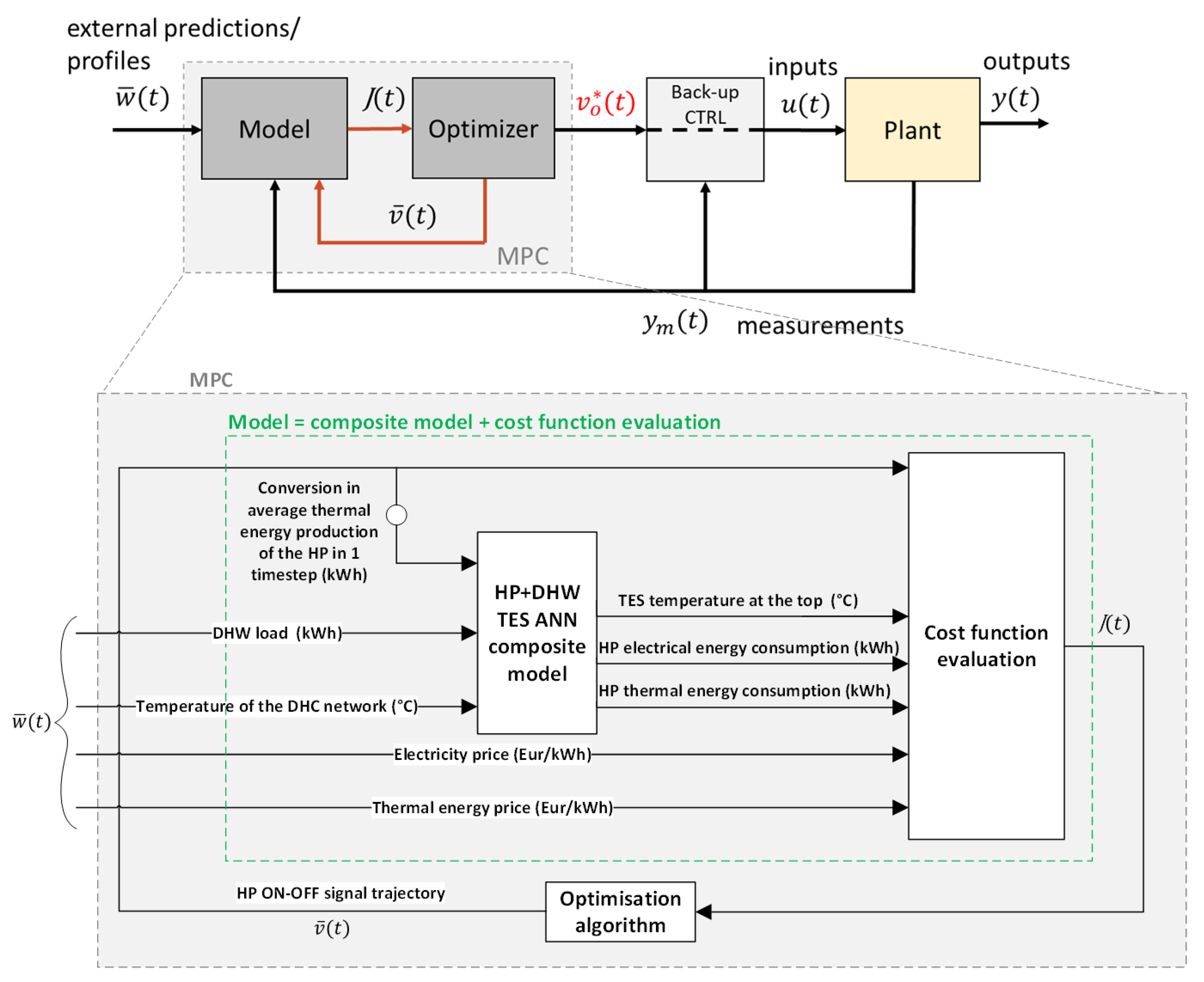
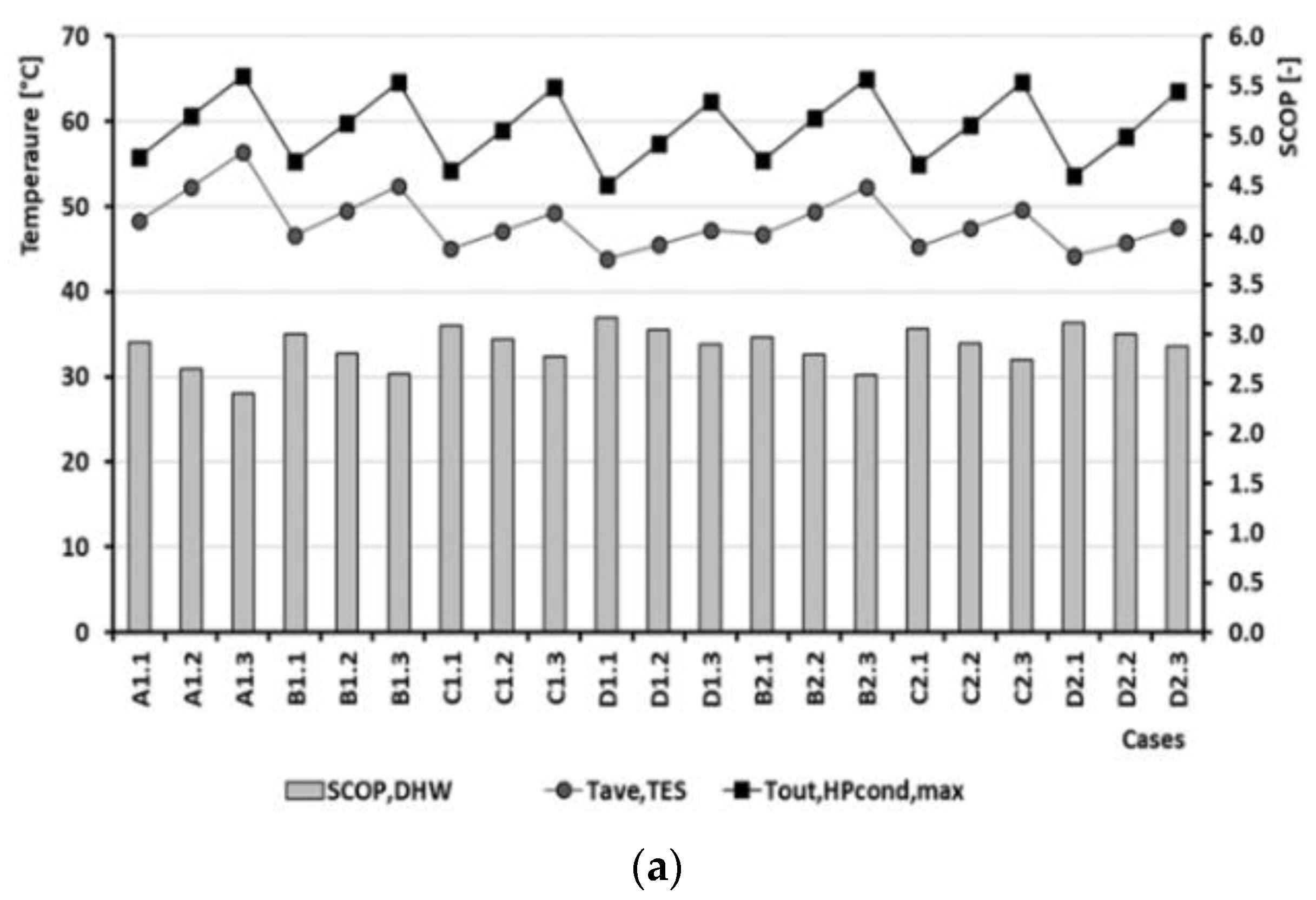
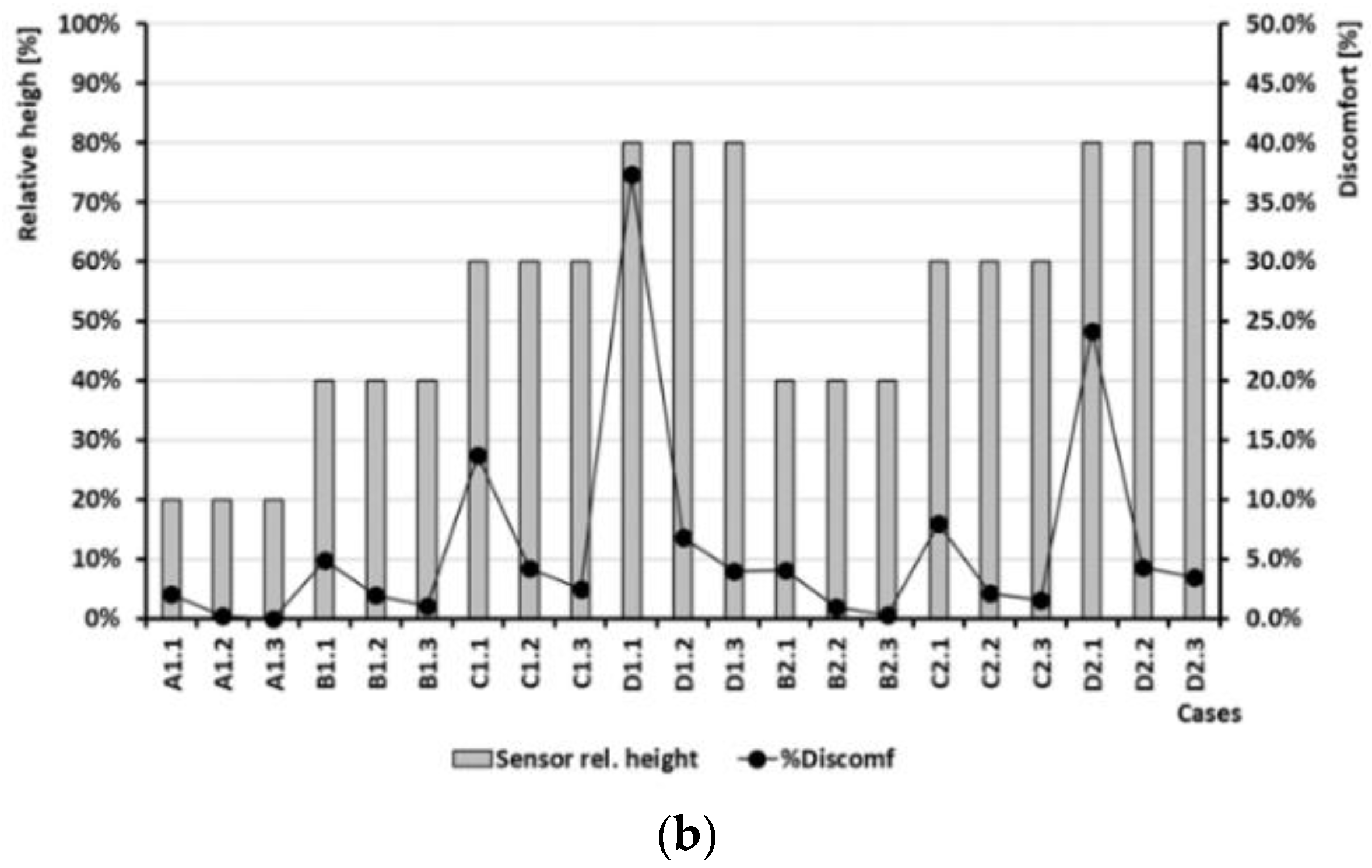
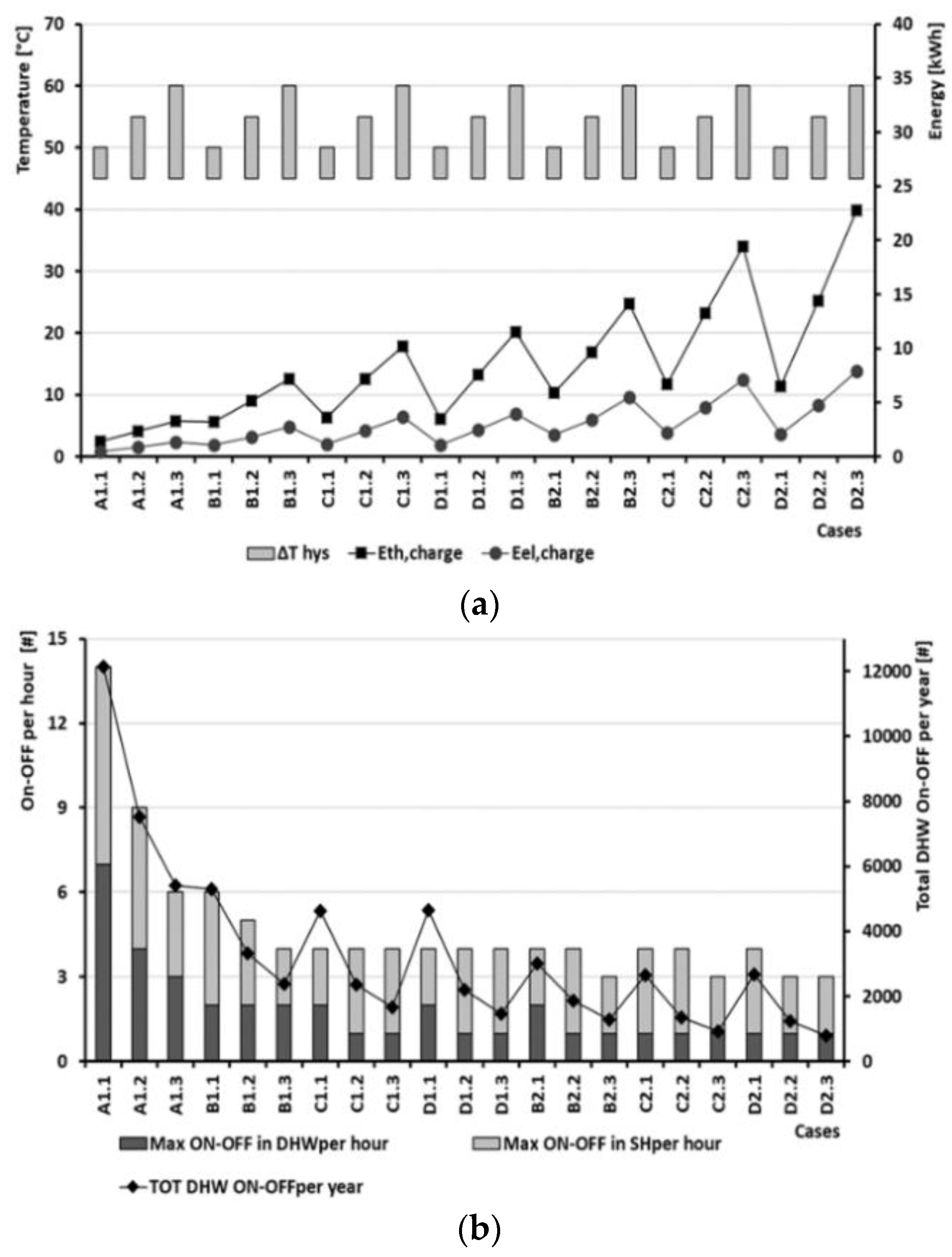
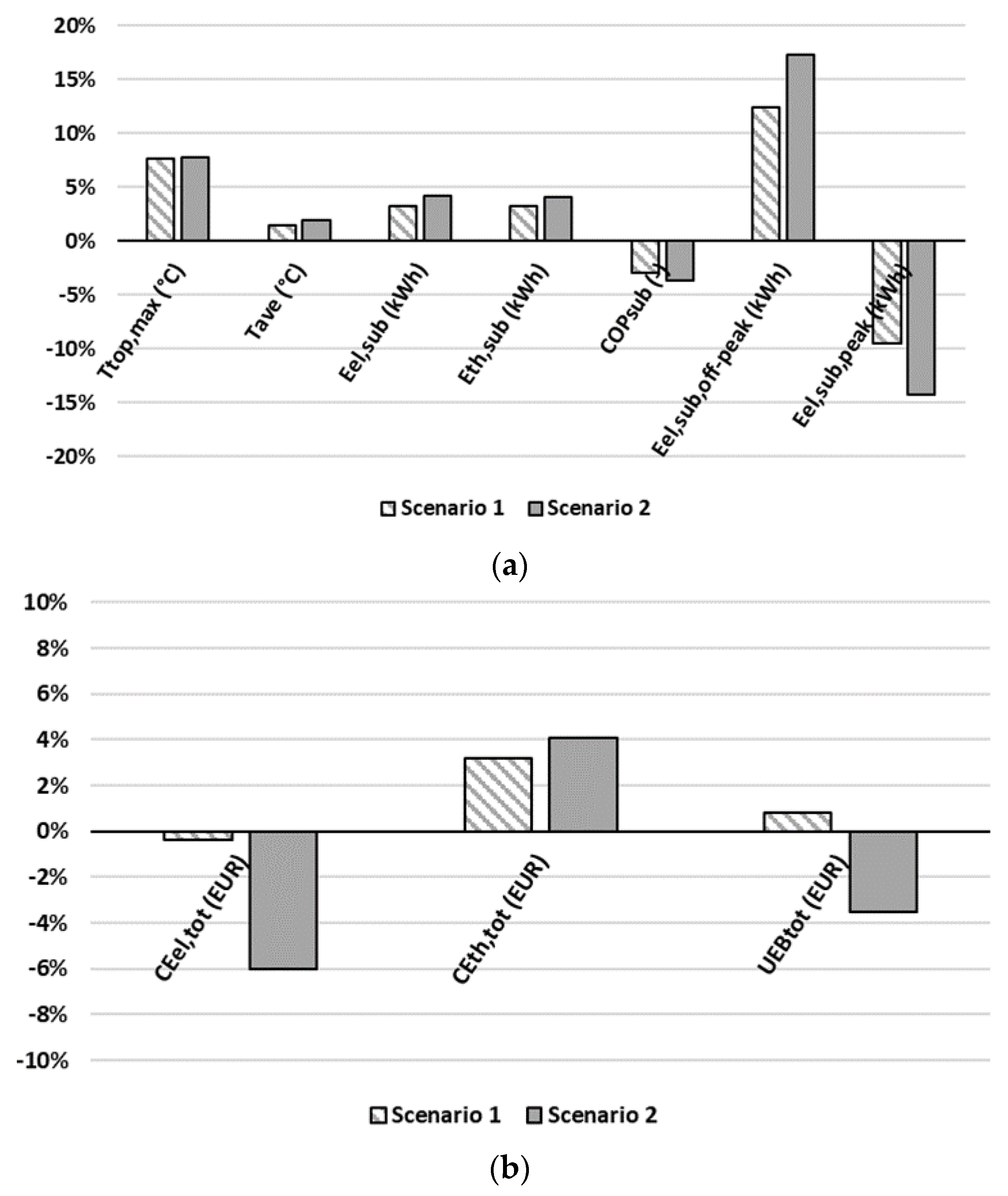
| DHW TES ANN Model | WSHP ANN Model | ||||
|---|---|---|---|---|---|
| (%) | (%) | (%) | (%) | ||
| 0.065% | 0.117% | 0.164% | −0.735% | ||
| (%) | (%) | (%) | (%) | ||
| 3.4% | 4.6% | 1.3% | 0.8% | ||
| (%) | (%) | (%) | (%) | (%) | (%) |
| 0.1% | 4.0% | 2.9% | 0.53% | 1.08% | 0.85% |
| Scenario | cEel,off-peak EUR/kWh) | cEel,peak (EUR/kWh) | Ttop,max (°C) | Tave (°C) | Eel,SUB,DHW (kWh) | Eth,HP eva,DHW (kWh) | COPsub (-) | Eel,SUB,DHW,off-pek (kWh) | Eel, SUB,DHW,peak (kWh) | Non (-) |
|---|---|---|---|---|---|---|---|---|---|---|
| Baseline (RBC) | 50.4 | 40.7 | 439.6 | 993.1 | 2.78 | 258 | 182 | 101 | ||
| MPC scenario 1 | 0.15 | 0.3 | 54.3 | 41.3 | 454.3 | 1025.2 | 2.70 | 290 | 165 | 159 |
| 7.7% | 1.5% | 3.3% | 3.2% | −3.0% | 12.4% | −9.5% | 57.4% | |||
| MPC scenario 2 | 0.15 | 0.6 | 54.3 | 41.4 | 458.2 | 1033.6 | 2.68 | 302 | 156 | 169 |
| 7.8% | 1.9% | 4.2% | 4.1% | −3.7% | 17.3% | −14.2% | 67.3% | |||
| Scenario | cEel,off-peak (EUR/kWh) | cEel,peak (EUR/kWh) | cEth,dhc (EUR/kWh) | CEel,tot (EUR) | CEth,tot (EUR) | UEBtot (EUR) |
|---|---|---|---|---|---|---|
| Baseline (RBC) | 0.15 | 0.3 | 0.05 | 93.2 | 49.7 | 142.9 |
| MPC scenario 1 | 0.15 | 0.3 | 0.05 | 92.8 | 51.3 | 144.1 |
| Rel. var. | −0.4% | 3.2% | 0.8% | |||
| Baseline (RBC) | 0.15 | 0.6 | 0.05 | 147.9 | 49.7 | 197.5 |
| MPC scenario 2 | 0.15 | 0.6 | 0.05 | 139.0 | 51.7 | 190.7 |
| Rel. var. | −6.0% | 4.1% | −3.5% |
© 2020 by the authors. Licensee MDPI, Basel, Switzerland. This article is an open access article distributed under the terms and conditions of the Creative Commons Attribution (CC BY) license (http://creativecommons.org/licenses/by/4.0/).
Share and Cite
Buffa, S.; Soppelsa, A.; Pipiciello, M.; Henze, G.; Fedrizzi, R. Fifth-Generation District Heating and Cooling Substations: Demand Response with Artificial Neural Network-Based Model Predictive Control. Energies 2020, 13, 4339. https://doi.org/10.3390/en13174339
Buffa S, Soppelsa A, Pipiciello M, Henze G, Fedrizzi R. Fifth-Generation District Heating and Cooling Substations: Demand Response with Artificial Neural Network-Based Model Predictive Control. Energies. 2020; 13(17):4339. https://doi.org/10.3390/en13174339
Chicago/Turabian StyleBuffa, Simone, Anton Soppelsa, Mauro Pipiciello, Gregor Henze, and Roberto Fedrizzi. 2020. "Fifth-Generation District Heating and Cooling Substations: Demand Response with Artificial Neural Network-Based Model Predictive Control" Energies 13, no. 17: 4339. https://doi.org/10.3390/en13174339
APA StyleBuffa, S., Soppelsa, A., Pipiciello, M., Henze, G., & Fedrizzi, R. (2020). Fifth-Generation District Heating and Cooling Substations: Demand Response with Artificial Neural Network-Based Model Predictive Control. Energies, 13(17), 4339. https://doi.org/10.3390/en13174339





